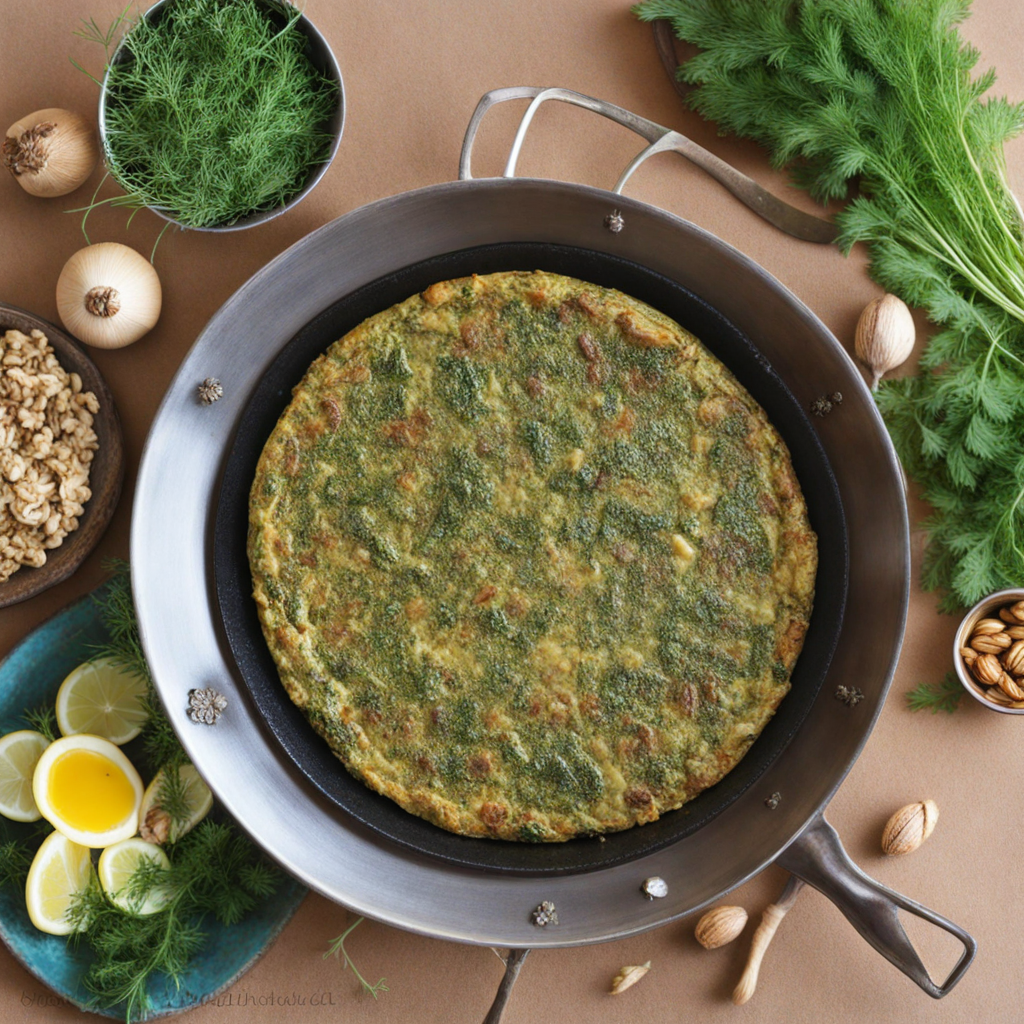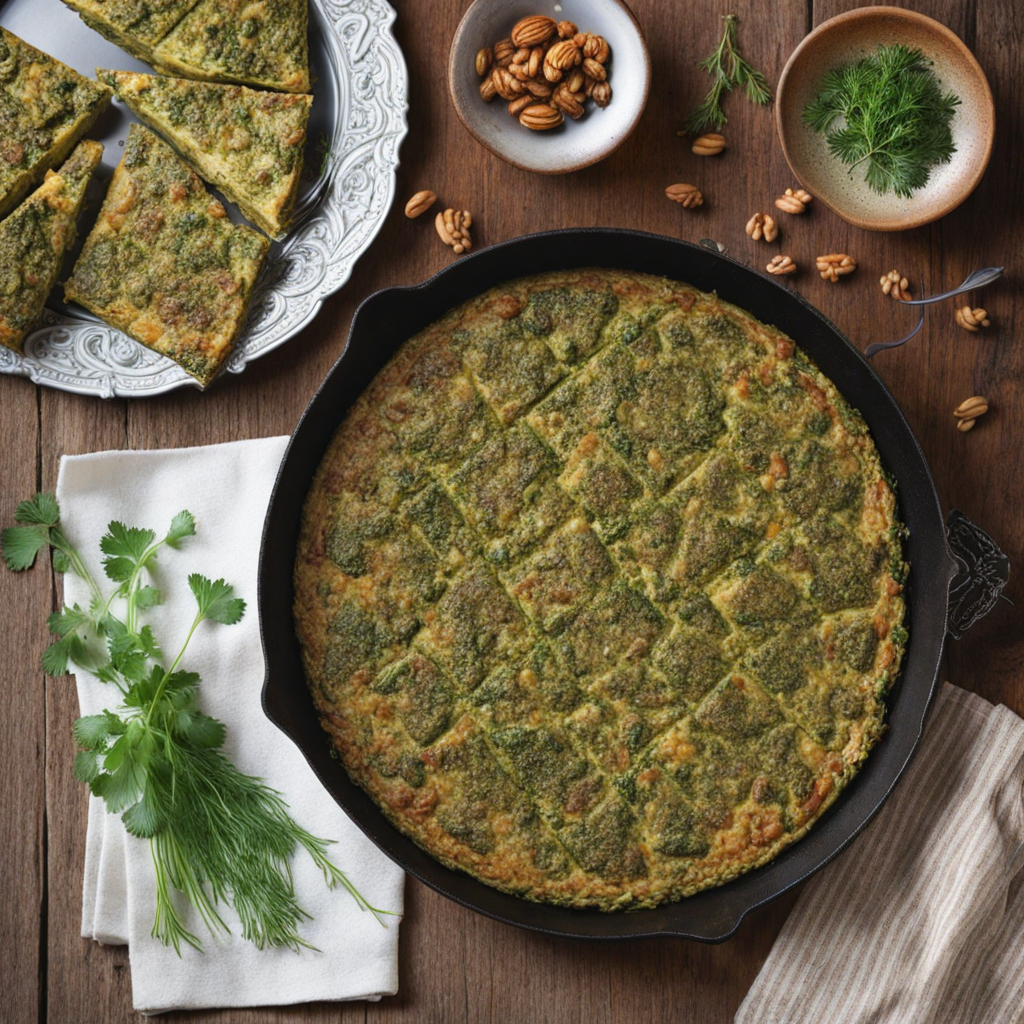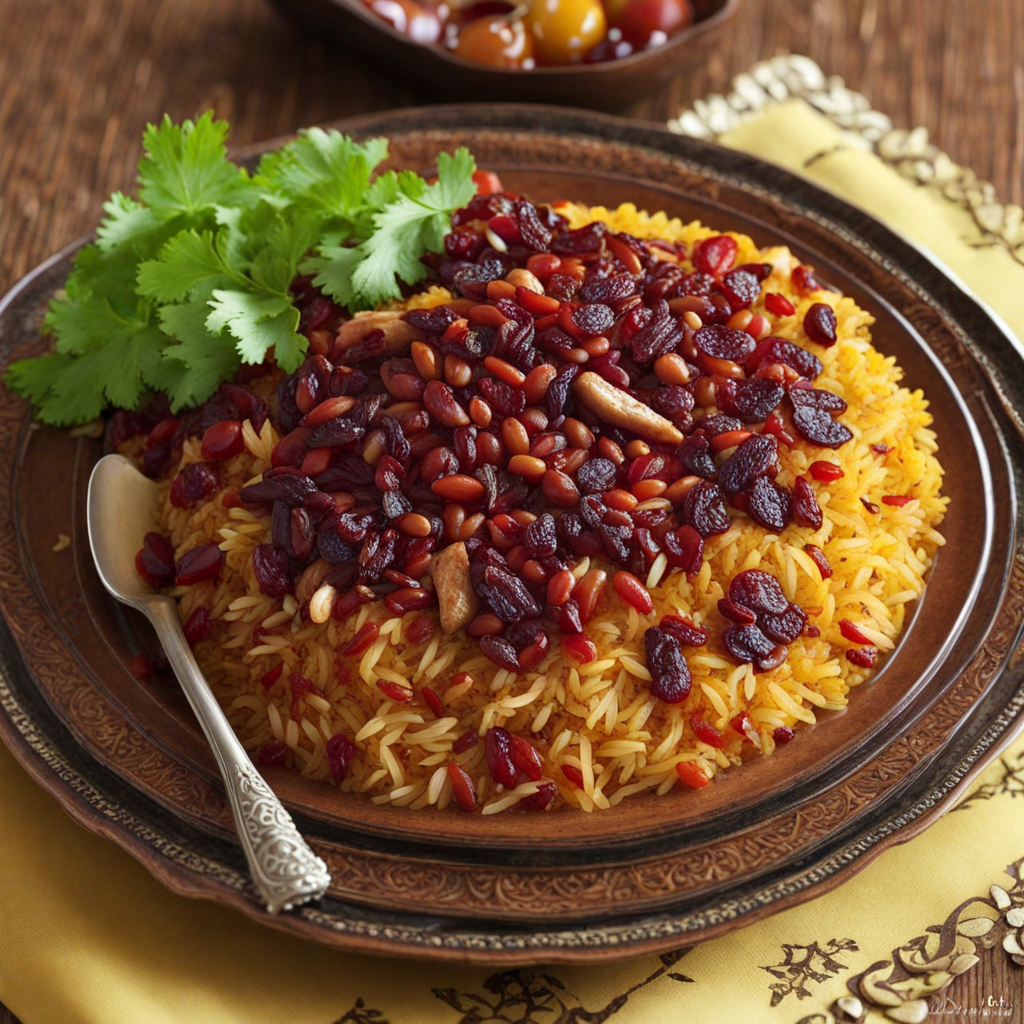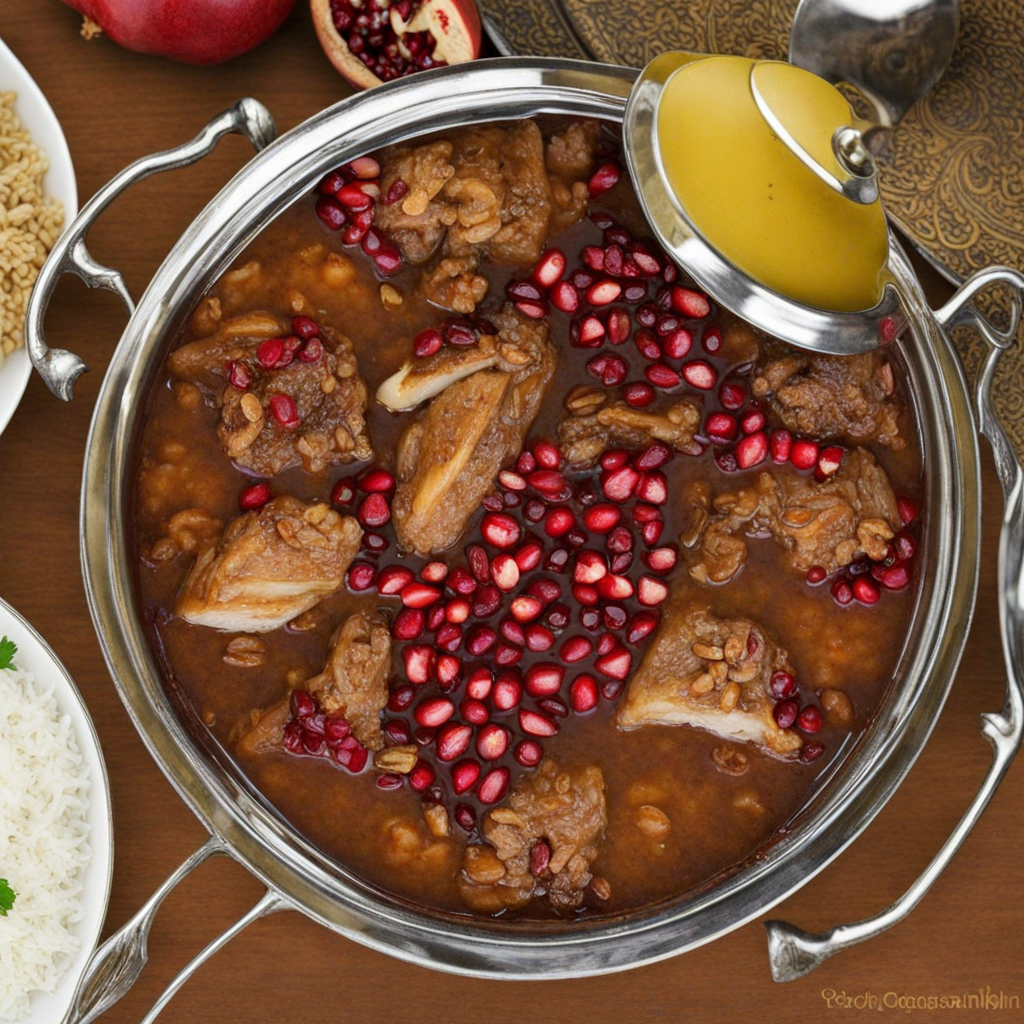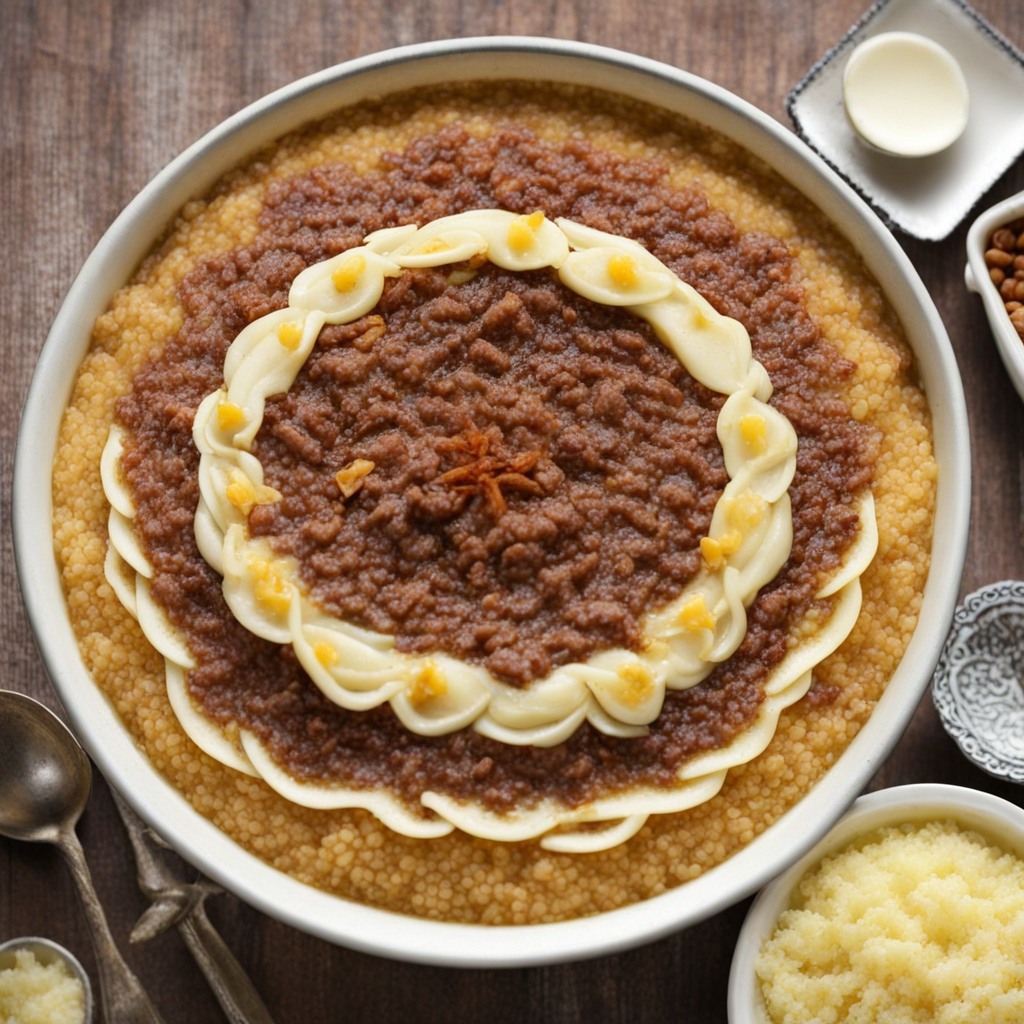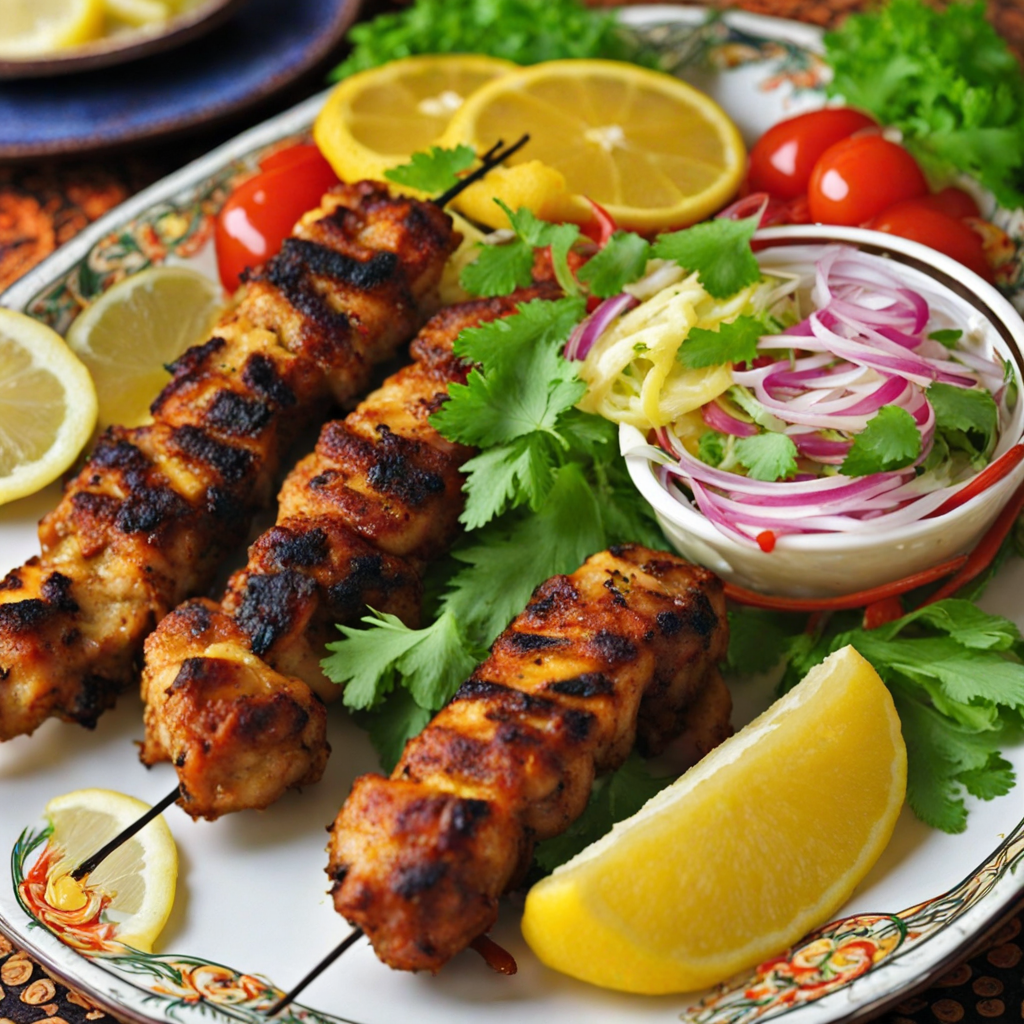Kuku Sabzi
Kuku Sabzi is a vibrant Persian herb frittata that showcases the rich culinary traditions of Iran. It is a beautifully green dish, primarily made with a variety of fresh herbs such as parsley, cilantro, dill, and chives, which contribute not only to its striking color but also to its aromatic flavor profile. The herbs are usually mixed with eggs, creating a light and fluffy texture. The preparation is often enhanced with the addition of walnuts and barberries, which provide a delightful crunch and a hint of tartness, respectively, that beautifully balances the richness of the eggs. The cooking process involves gently sautéing the herbs to release their essential oils and flavors before combining them with beaten eggs. This mixture is then poured into a skillet to cook slowly until it forms a golden crust on the outside while remaining tender and moist on the inside. Kuku Sabzi can be enjoyed warm or at room temperature, making it a versatile dish perfect for various occasions, from a hearty breakfast to a light lunch or dinner. This dish is often served with a side of fresh bread, yogurt, or a simple salad, allowing for a refreshing contrast to the savory frittata. Kuku Sabzi not only tantalizes the taste buds with its unique blend of flavors but also offers a nutritious option, packed with vitamins from the herbs. For anyone looking to explore new culinary horizons, Kuku Sabzi is a delicious introduction to the fresh, herbaceous, and subtly spiced world of Persian cuisine.
How It Became This Dish
Origin and Ingredients The delicious dish known as کوکو سبزی (Kuku Sabzi) has its roots deeply embedded in Persian culinary tradition. This vibrant herb frittata is believed to have originated in ancient Persia, where the cultivation of herbs was a significant aspect of daily life and cooking. The name "kuku" derives from the Persian word for "to cook," and it reflects the dish's preparation method, which traditionally involves whisking eggs with a variety of herbs and greens. The primary ingredients of Kuku Sabzi include fresh herbs such as parsley, cilantro, chives, and dill, along with spinach or fenugreek. The dish may also include eggs, turmeric, and sometimes walnuts or barberries for added flavor and texture. The choice of herbs can vary based on seasonal availability, which speaks to the dish's flexibility and the importance of fresh produce in Persian cuisine. \n\n Cultural Significance Kuku Sabzi holds a prominent place in Iranian culture, especially during celebrations and festivals. It is traditionally served during the Persian New Year, known as نوروز (Nowruz), which marks the arrival of spring. As a symbol of renewal and rebirth, the dish embodies the spirit of the season, with its vibrant green color representing the flourishing of nature. Families often prepare Kuku Sabzi as part of the Haft-Seen table, a traditional arrangement of seven symbolic items that begins the year on a hopeful note. Beyond its association with Nowruz, Kuku Sabzi is also cherished as a comfort food, often enjoyed during family gatherings and festive occasions. Its versatility allows it to be served hot or cold, making it a popular choice for picnics and potlucks. The communal aspect of preparing and sharing the dish fosters a sense of togetherness among family and friends. \n\n Historical Development Throughout history, Kuku Sabzi has evolved, influenced by the changing tastes and agricultural practices of the Iranian people. The dish can be traced back to at least the Sassanian era (224-651 CE), a time when the importance of herbs in Persian cuisine was widely recognized. Historical texts and culinary manuscripts from this period suggest that frittatas or egg-based dishes were common among the nobility, highlighting the dish's longstanding presence in Iranian gastronomy. The introduction of new ingredients through trade routes and cultural exchanges further enriched Kuku Sabzi. Ingredients like barberries and walnuts, which are often added to the dish today, were likely incorporated as Persian cuisine absorbed influences from neighboring regions. This adaptability is a hallmark of Persian cooking, where traditional recipes are continuously refined and reinvented. \n\n Regional Variations As with many traditional dishes, Kuku Sabzi has regional variations across Iran, reflecting local tastes and ingredient availability. In northern regions, where lush greenery and diverse herbs abound, you might find variations that include a broader array of greens, while southern versions may incorporate spices that are more prevalent in those areas. Additionally, the texture and cooking method can vary; some families prefer a denser, more cake-like consistency, while others opt for a lighter, fluffier version. In some areas, Kuku Sabzi is served alongside yogurt or a refreshing salad, enhancing the overall meal experience. These local adaptations not only showcase the diversity of Iranian cuisine but also highlight the communal practices of cooking and sharing food that are vital to Iranian culture. \n\n Modern Interpretations In contemporary times, Kuku Sabzi has gained popularity beyond Iranian borders, finding its way into the kitchens of food enthusiasts around the globe. As interest in Middle Eastern cuisine has surged, chefs have embraced Kuku Sabzi, experimenting with its ingredients and presentation. Some modern interpretations incorporate non-traditional elements like cheese or various spices, while others explore vegan or gluten-free versions to cater to diverse dietary preferences. Social media platforms have also played a role in revitalizing interest in Kuku Sabzi. Food bloggers and influencers showcase the dish visually, sharing their unique spins and inspiring others to try their hand at this beloved Persian staple. It has become a symbol of cultural exchange, allowing people from different backgrounds to appreciate the flavors and traditions of Iranian culinary heritage. \n\n Health Benefits In addition to its rich history and cultural significance, Kuku Sabzi is celebrated for its health benefits. Packed with fresh herbs, it is a nutrient-dense dish that is high in vitamins A, C, and K, as well as antioxidants. The combination of eggs provides protein, making it a well-rounded meal option that can be enjoyed at any time of day. Moreover, the use of herbs in Kuku Sabzi not only adds flavor but also contributes to overall health. For instance, parsley is known for its anti-inflammatory properties, while dill aids digestion. This healthful aspect of Kuku Sabzi aligns with the Iranian philosophy of using food as medicine, where meals are crafted not just for taste but also to promote well-being. \n\n Conclusion Kuku Sabzi is more than just a dish; it is a tapestry woven with history, culture, and tradition. Its origins reflect the agricultural practices of ancient Persia, while its evolution through the ages speaks to the adaptability and creativity of Iranian cuisine. As a symbol of renewal, family, and health, Kuku Sabzi continues to be celebrated in Iran and embraced worldwide, ensuring that this beloved frittata remains an enduring part of culinary history.
You may like
Discover local flavors from Iran


